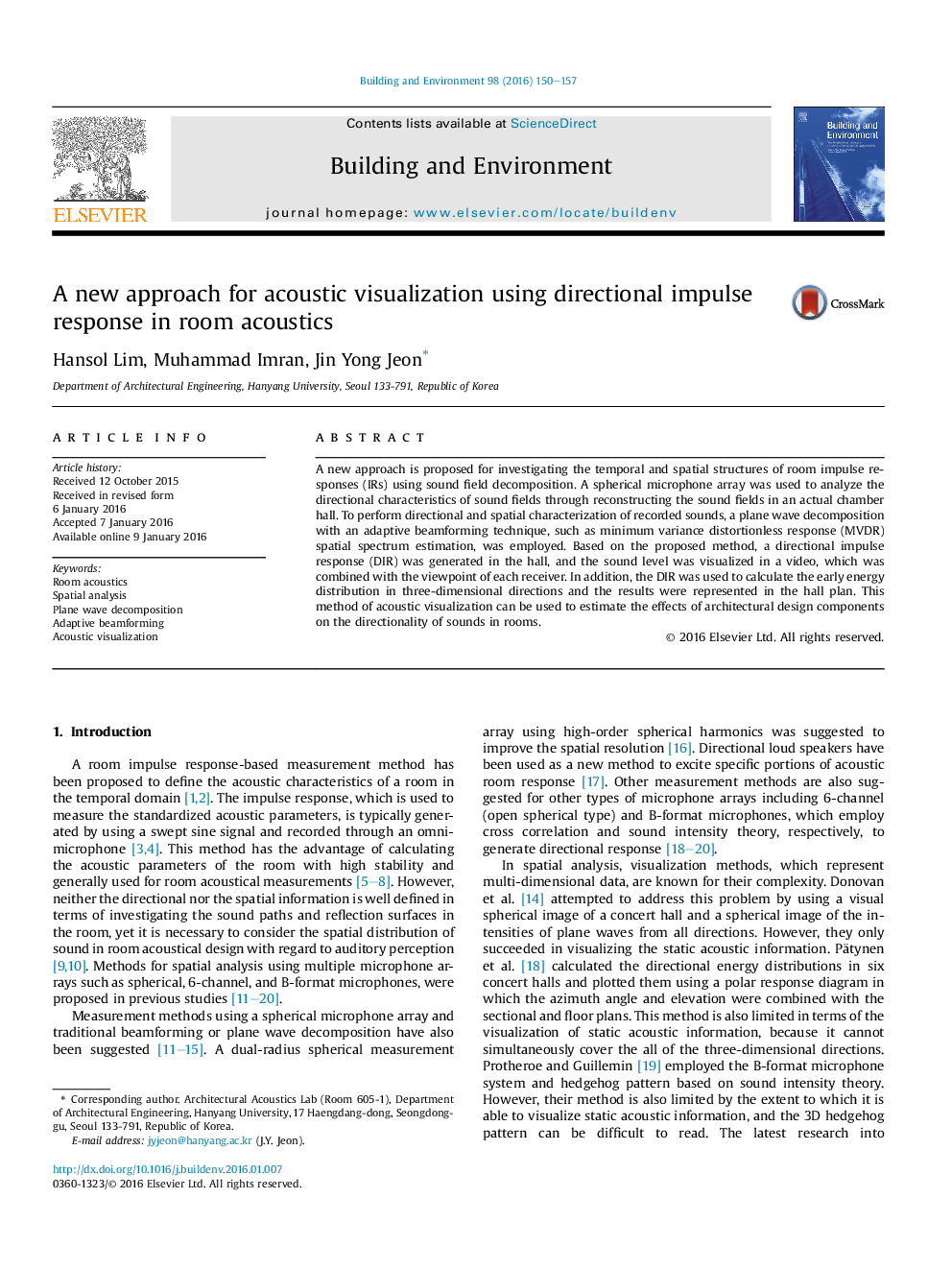| Article ID | Journal | Published Year | Pages | File Type |
|---|---|---|---|---|
| 6699552 | Building and Environment | 2016 | 8 Pages |
Abstract
A new approach is proposed for investigating the temporal and spatial structures of room impulse responses (IRs) using sound field decomposition. A spherical microphone array was used to analyze the directional characteristics of sound fields through reconstructing the sound fields in an actual chamber hall. To perform directional and spatial characterization of recorded sounds, a plane wave decomposition with an adaptive beamforming technique, such as minimum variance distortionless response (MVDR) spatial spectrum estimation, was employed. Based on the proposed method, a directional impulse response (DIR) was generated in the hall, and the sound level was visualized in a video, which was combined with the viewpoint of each receiver. In addition, the DIR was used to calculate the early energy distribution in three-dimensional directions and the results were represented in the hall plan. This method of acoustic visualization can be used to estimate the effects of architectural design components on the directionality of sounds in rooms.
Related Topics
Physical Sciences and Engineering
Energy
Renewable Energy, Sustainability and the Environment
Authors
Hansol Lim, Muhammad Imran, Jin Yong Jeon,
